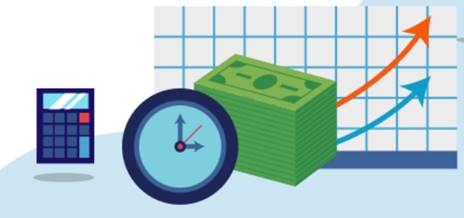Types of Savings
Accounts

Sponsored by
Discover and Discovery Education
Unit Overview
In this
unit, Types of Savings Accounts you will learn about the impact
that earning compound interest makes on a persons savings and the difference
it makes to start saving at a young age. The unit concludes with an exploration
of various options for saving money and a comparison between saving and
investing.
Section A Growing Savings Through Interest

In this section, the module will help you answer why it is
important to save money early. You will explore the power of compound interest
by seeing how people who save small amounts early on increase their money.
Click
below to complete the module.
Lets Practice
Compound Interest
This four-minute video provides an overview of what compound
interest is and how it works. Graphs show the difference between simple and
compound interest and the impact of starting to save early.
Ψ Compound Interest
Concept Video
After watching the video above, answer the Video Questions below on
a piece of scrap paper.
1.
Why do people keep money in
banks, savings and loans, and credit unions?
a. These institutions are convenient.
b. Deposits at these institutions are safe and
earn interest
2.
What is interest?
a. A tax refund to a household from the
government
b. Money paid by financial institutions on
customers deposits
3.
What is the difference
between simple interest and compound interest plans?
a. Compound interest pays interest on interest
already earned
b. Interest earned in a simple interest plan
cannot be taxed
4.
You deposit $100 at a 5%
interest rate. With compound interest,
at the end of two years:
a. Your savings account will have less than $110
b. Your savings account will have more than $110
5.
What is a good way to
increase your wealth through savings?
a. start saving early
b. make small deposits in your savings account
Section B Choosing
a Savings Method

In this
section, you will compare various savings methods, including certificates of
deposit, savings accounts, and money market accounts, and consider the benefits
and tradeoffs of each.
Click
below to begin the module.
Lets
Practice
Youll learn
how interest can be calculated on a yearly, monthly, or even daily basis, and
how the interest you accumulate is proportional to how much money you have in
the bank. Youll also learn the differences between simple interest and
compound interest, and how to calculate each.
Click here to watch a video on Interest and
complete the quiz.

